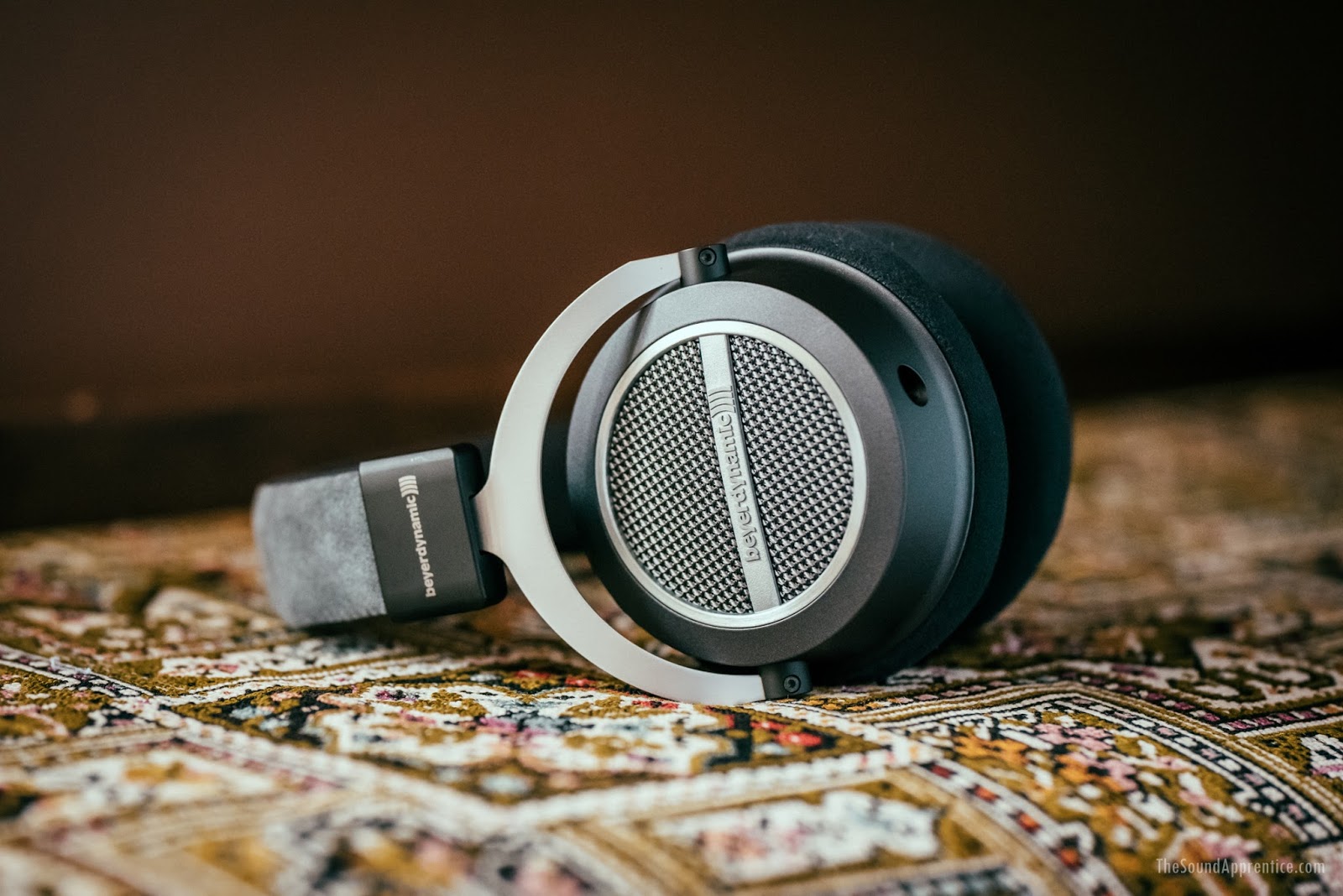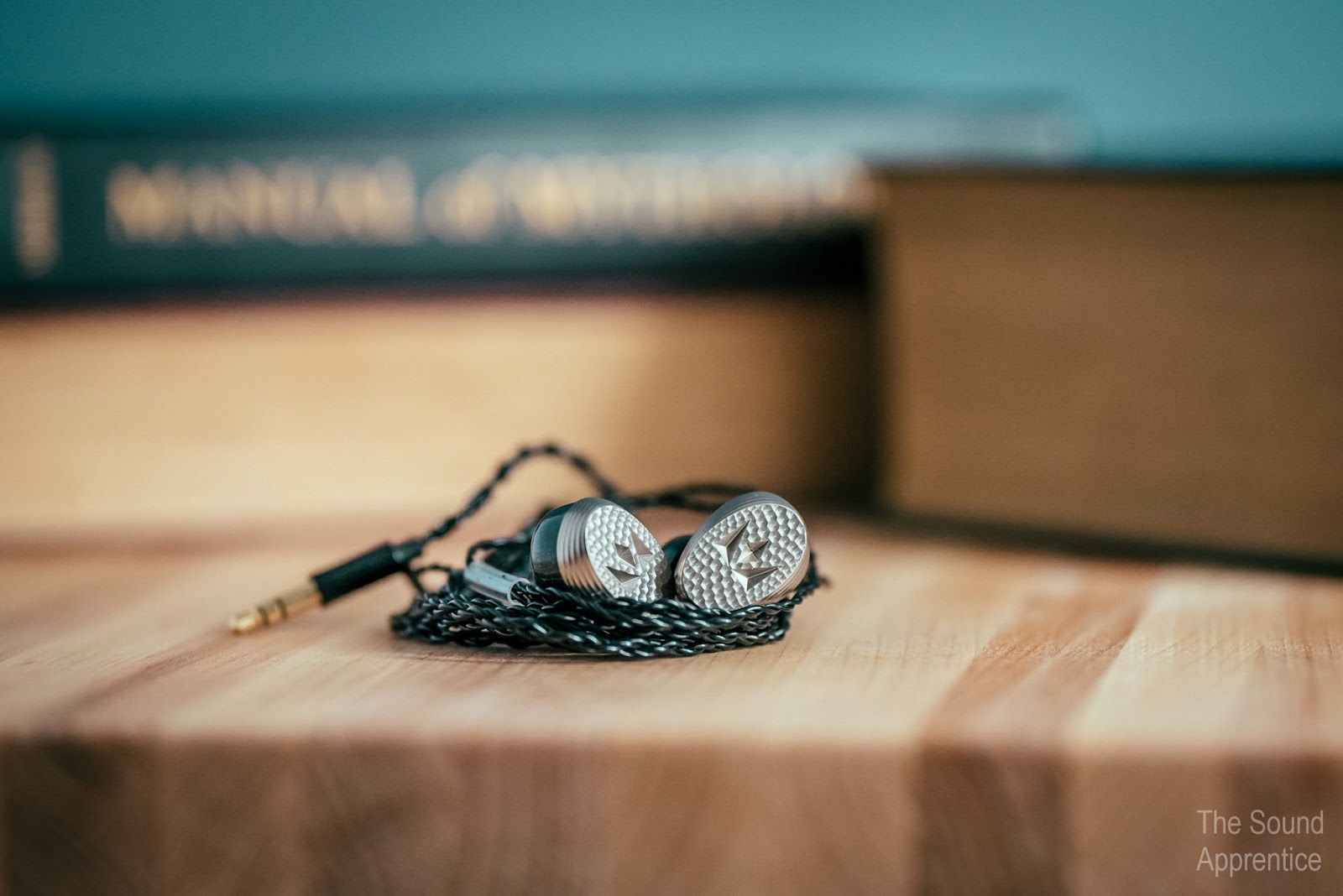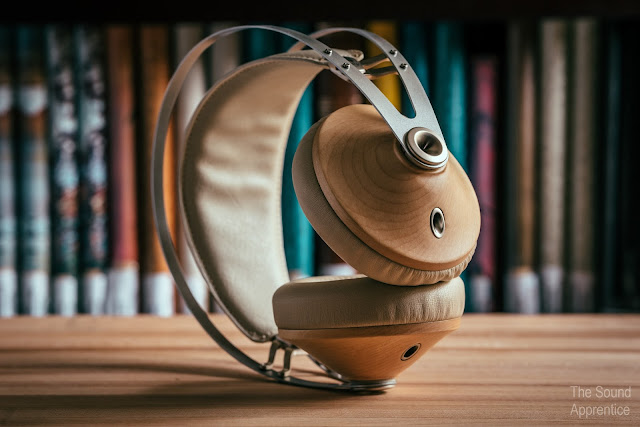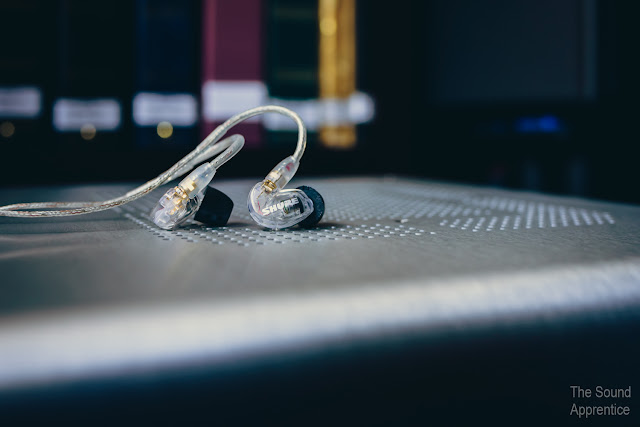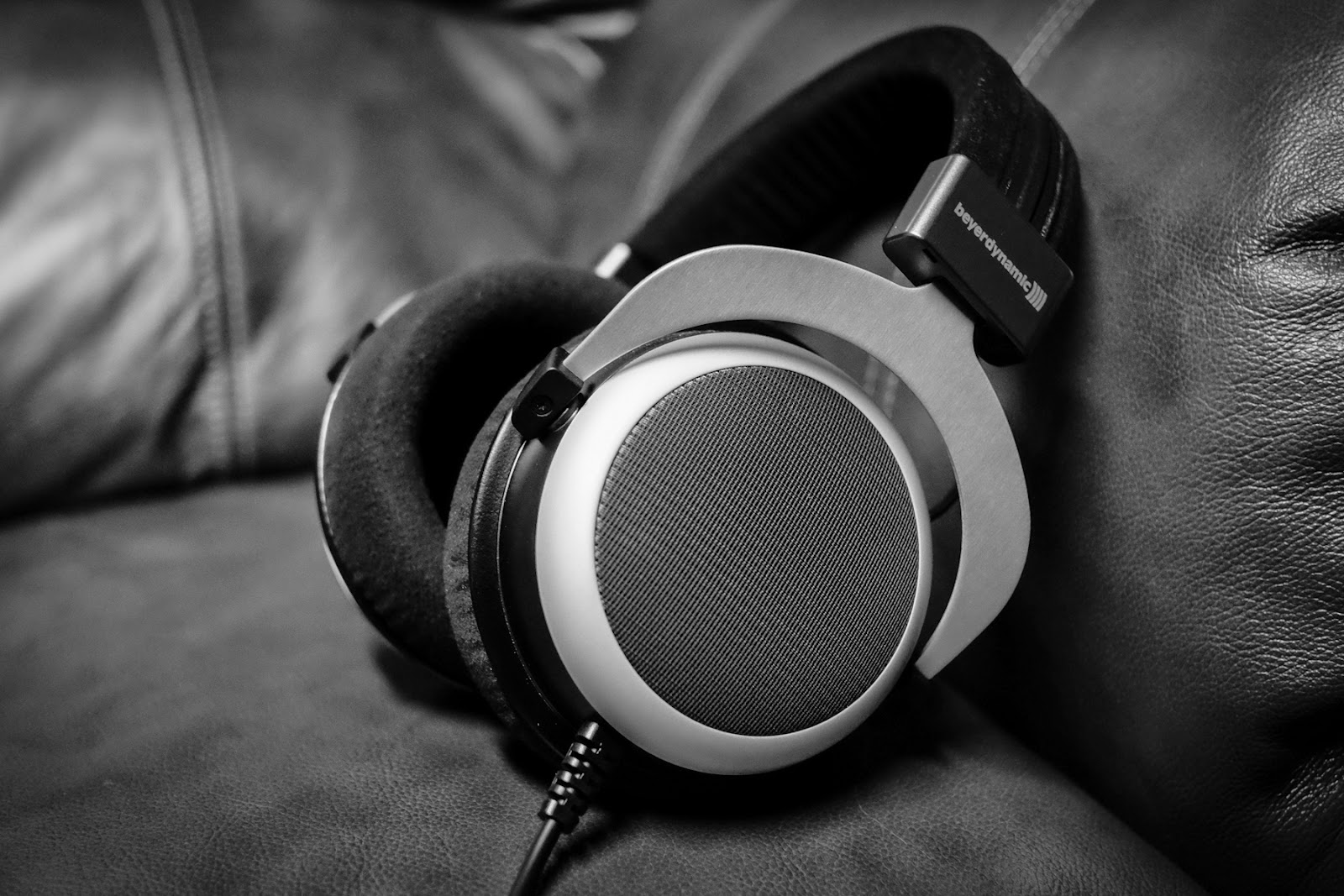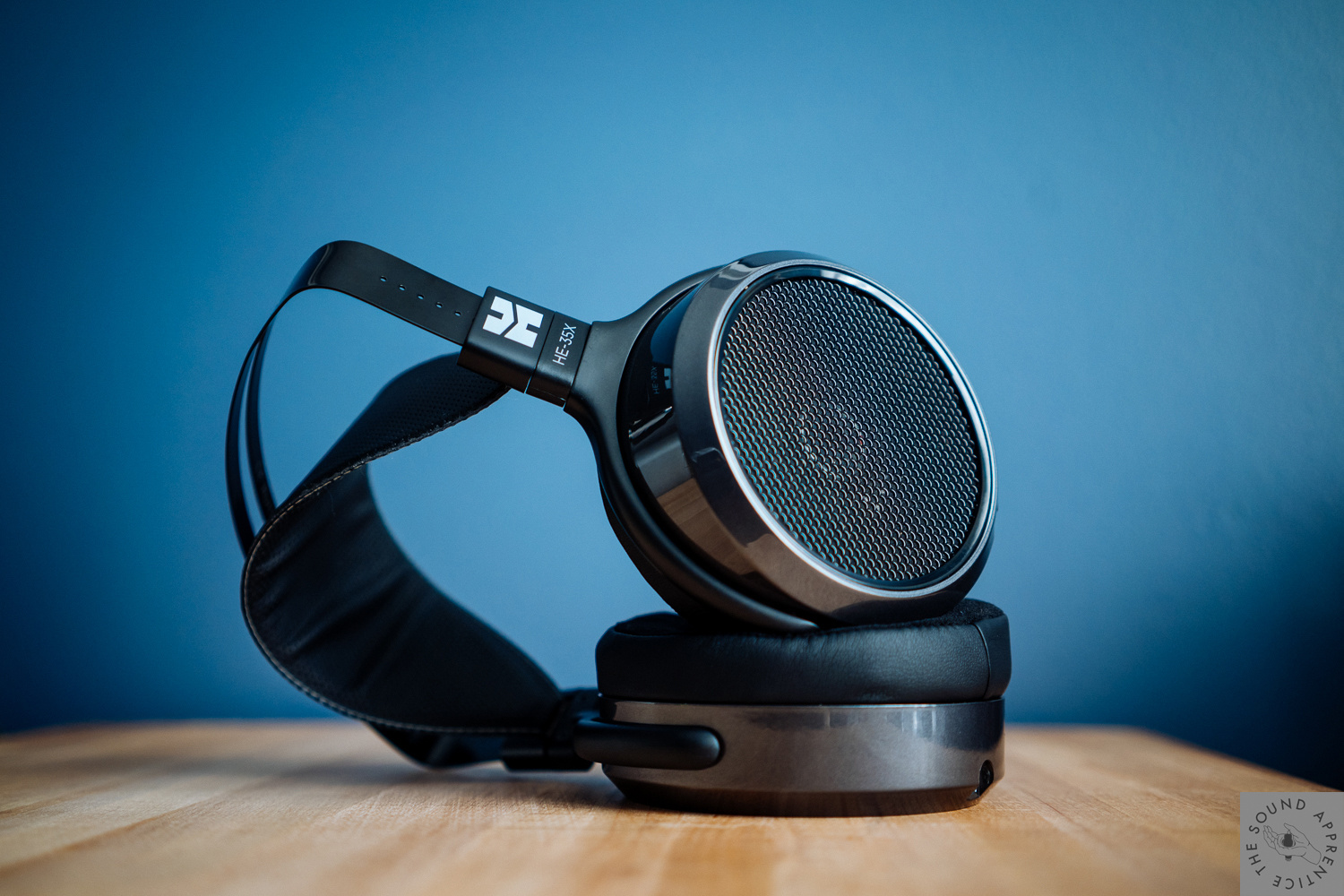
The HE-350 is dead; long live the HE-35X. But will the Massdrop x HIFIMAN HE-35X, debuting at a pre-order price of just $90, be crowned king of Massdrop’s entry-level audiophile headphone lineup?
Nearly three years ago, Massdrop announced the HE-350, an open-back, 50mm dynamic driver headphone created in collaboration with high-end headphone manufacturer HIFIMAN. Priced at just $99 (cheap by any audiophile’s standards), and looking quite like its high-priced brethren at the time, the HE-350 seemed like an absolute steal. Having owned and enjoyed HIFIMAN’s classic HE-500 and HE-6 planar magnetic powerhouses, I jumped on the HE-350 drop expecting an excellent entry-level headphone to put into the rotation for comparison reviews and occasional personal use. I couldn’t have been more wrong. The HE-350 was utterly disappointing to my ears. I quickly sold it at a loss and swore off chasing budget audiophile products priced too good to be true.
So, to say I was surprised when Massdrop reached out to me to be an early reviewer of its latest Massdrop x HIFIMAN collaboration would be an understatement. “We’ve overhauled our Massdrop x HIFIMAN HE-350. We listened to all the comments and feedback to improve sound, durability, and comfort,” Massdrop said in reaching out to me. I guess they’re confident that the new HE-35X’s improvements will have me singing a different tune this time around. Let’s find out.
Unboxing Impressions
It wouldn’t be hard to mistake the HE-35X for the HE-350. Straight out of the box, the HE-35X looks and feels a lot like its predecessor. The same sleek metallic gray and black color combination that caught my eye the first time around is back. I would’ve opted for an all matte finish like the Beyerdynamic Amiron Home or Massdrop x HIFIMAN HE4XX for some differentiation from its predecessor, but Massdrop didn’t ask me about looks. So far, the HE-35X’s glossy plastic cups are holding up better than those of my several times more expensive HE-500 and HE-6, which both showed fine surface scratches from even the slightest mishandling.
Also returning for this edition is the suspension headband. I’m told this version has metal-reinforced yokes. I’ll take Massdrop’s word for it since the HE-35X feels slightly more robust than the toy-like HE-350. Of all the headphone headbands out there, this is one of the better designs for comfort and articulation. Between its light weight, Goldilocks clamping force (not too loose, not too tight — unless you have a really wide head), and thinly padded wide synthetic leather strap, the HE-35X is very comfortable for short listening sessions and better than tolerable over a full day’s use. Can you ask for more in this department? Not really. I will caution you of one thing: Once you set the strap on the indentation that fits your head, minimize readjustments — the tabs that secure the strap in place quickly wear the paint off the black metal headband, leaving a fine silver line between each indentation hole.
A welcomed HE-35X enhancement comes by way of its ear pads. The HE-35X comes equipped with HIFIMAN’s popular FocusPads. These are the same premium angled hybrid (pleather/velour) ear pads found on HIFIMAN’s HE-400i and other higher-priced headphones of similar design and are an especially nice feature when you consider that HIFIMAN sells them for $39. Based on past experiences with HIFIMAN ear pads, I can attest the FocusPads help immensely with positioning and comfort; however, they still get toasty — watch for ear sweat. These ear pads have also been said to be itchy for some users, particularly those with sensitive skin. If this is the case for you, I suggest removing the pads to hand-wash them with a mild detergent and then letting them air dry. I’ve had good results doing this myself, and if that still fails you, I have no doubt that the ear pad connoisseurs of our hobby will soon be testing the various options from Brainwavz and ZMF Headphones to see if any of them perform better than the FocusPads.
As far as tactile enhancements go, the last one worth mentioning is the cable. Back in the day, HIFMAN’s removable cables terminated at the cups with the most finger-frustrating mini-coax connections. Thank the audio gods that those things are gone. The HE-350 used more convenient 2.5mm TRS connectors, but now the HE-35X uses robust 3.5mm TRS connections at the ear cups for a quick, secure hook-up. The cable itself is plain and simple: Black, 53” long (I’m assuming it’s all OFC copper), terminated with a right-angle 1/8” headphone plug (3.5mm), and a 1/4” adapter is included. While the cable’s plugs are gold plated, oddly, the jacks on the cups aren’t. I guess they had to cut costs somewhere.

Listening Impressions
While the HE-35X looks and feels much like the old HE-350, it sounds entirely different — that’s a very good thing. Massdrop tells me the HE-35X has been completely re-tuned to improve frequency response and appeal to customer requests. I’ll wholeheartedly back that claim. I tolerated the HE-350 long enough to get some listening impressions on paper. I know a lot of people went through lengths to mod their HE-350s in attempt to correct its shortcomings. Well, I actually kept listening to the HE-35X long after I had a good enough impression to write this review. In other words, the HE-35X’s frequency response sounds leagues above the HE-350. In fact, it’s a pretty fun headphone. What I mean by that is that it’s tuned to get your toes tapping with boosted bass and a tipped-up top end.
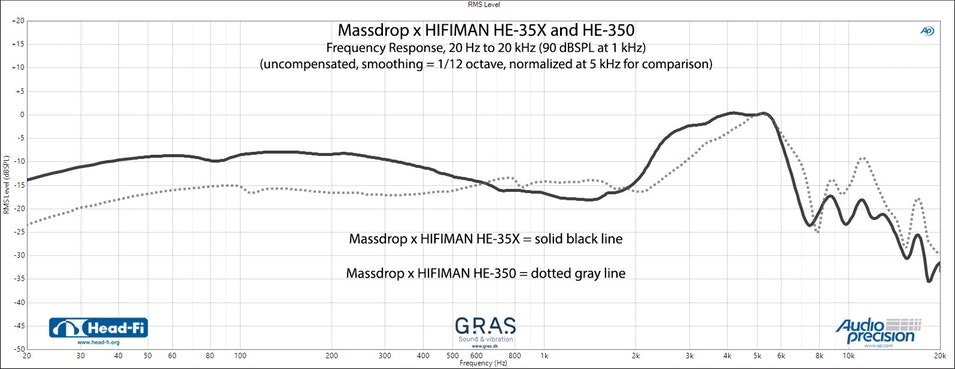
The HE-35X’s treble jumps out front from the get-go. You’ll need to give your ears a few minutes to acclimate to this, but despite being crisp and forward, the HE-35X’s highs aren’t ear-piercing or overly bright or fatiguing. This is a big win for the HE-35X since many headphones around this price point struggle with sibilance and sharp highs that crumble as cymbals crash. Sure, cymbals can sound splashy sometimes, some grain comes out when things get loud, and some female voices can sound especially forward, but it’s hard to fault a budget-priced headphone for these things. Overall, the HE-35X delivers a decent level of clarity and separation between brass sections and cymbals and toppy female vocalists and their pianos — better than par for the price if you ask me. I’ll attribute this to the high-pass filtering circuit in each ear cup Massdrop says was introduced to “attenuate the treble for a better overall sound signature.”
If I had to fault the HE-35X’s top end, it would be in its lack of dimension and tonal quality; there’s little air or aura despite the large dynamic drivers and open-back design. On the positive side, being tipped-up but not toppy is a major refinement over the HE-350 and a solid accomplishment overall. The HE-35X’s highs simply sound more controlled and balanced overall.
Moving into the mids is where I feel the HE-35X labors some. This is somewhat predictable; when a headphone has emphasized bass and treble regions, finer midrange details will inevitably lack luster. This takes some of the euphoria out of tracks like John Butler’s “Ocean,” where the HE-35X struggles to fully reproduce the full-bodied extension and emotion of his 11-string guitar. A Deftones album, for another instance, will sound cutting but feel lean as the drive of the hearty distortion feels slightly recessed. As you crank the volume on your amp, your ears won’t be met with more machismo but instead with loudly splashing cymbals and booming bass lines. The piano, drums, and sax in “When the World Was One” by Matthew Halsall & the Gondwana Orchestra lack a bit of depth, presence, and separation as they struggle to flutter around the HE-35X’s tuning. While this isn’t to my taste, again it’s not uncommon for a headphone like this. It also doesn’t mean jazz, folk, or rock will necessarily sound bad out of the HE-35X, you just have to understand upfront that moody mids are not this headphone’s forte.
While the HE-35X stumbles slightly in the mids, namely towards the upper end of that range, it finds its stride again deeper in the dynamic range. The HE-35X’s bass extension is its saving grace. I expected either anemic or flabby overemphasized bass, but this is a headphone that carries a healthy rumble right into your ears, which makes electronic, hip hop, and rap most fun to listen to through the HE-35X. Heck, queue up Moderat’s “Bad Kingdom” and decide for yourself if you’re getting good bass for the buck.
The bass hits with conviction on this budget performer, but it performs best when the tracks aren’t overly busy, which seems to be a recurring theme. “Home” by John Butler Trio illustrates my point. The opening synth bass is clean and convincing, but when the floor toms come in heavy on the chorus, the HE-35X struggles to keep up with the congestion and loses impact and timbre. But hold on; spin up Oddisee’s “Ready to Rock” and, yep, you’ll be ready to roll. This is the kind of track the HE-35X lives for.
The HE-35X also does quite well with simple songs. Take John Mayer’s latest release, “I Guess I Just Feel Like,” where the even-toned and relaxed Mayer doesn’t challenge the HE-35X to do anything remarkable or complex — it’s just a laid-back listen where there’s little emphasis on any part of the dynamic range. “What am I Here For” by Jade Bird is another song where the HE-35X exhibits its ability to hint at being holographic when the tones and volume are just right.
I admit to wanting the HE-35X to be more holographic more often though. Despite being an open-back headphone, I can’t credit it with sounding especially three-dimensional, airy, or realistic. There’s no real magic about its sound stage, but it does place the music with pinpoint precision right between your ears. The HE-35X fills your head with music, which is much better than just filling your ears with noise (there was nothing musical about the HE-350).

So, what does this all mean? When unchallenged by dynamic layers of instruments and vocalists, the HE-35X easily punches above its weight. Simply put, I think the HE-35X is a fine and very listenable headphone for the price. Sure, there are better options out there for more money. There are also far worse options out there for less money, equal money, and even more money. What this all means is the Massdrop x HIFIMAN HE-35X offers good value for the audiophile on a restricted budget. That said, any buyer of the HE-35X needs to accept that it will not be their endgame headphone — it will only be a gateway to the absurdity that comes with being an audiophile (Massdrop will appreciate your repeat business).
Massdrop may decide to market the HE-35X as the king of their entry-level audiophile headphone line-up. I’ll crown it as the prince for the price. The real king is still the Massdrop x Sennheiser HD 6XX.
Alternate Approaches
Here’s my prediction for potential HE-35X buyers: You’ll stick with it for a little while, maybe even mess around with some mods, and then you’ll start to wonder what the next best thing is — it’s inevitable as an audiophile. So, I have a few recommendations for you. Each of these is a reiteration of a classic hi-fi headphone, so your “upgraditis” should be stayed for quite a while longer.
AKG: If you want a more neutral /balanced headphone with better detail clarity that will play well with a wider range of music (and responds well to EQing if you’re into that), the Massdrop x AKG K7XX should be a top consideration. At $200, it offers a strong feature set and attractive price-to-performance ratio. The original Austria-made AKG K701, was my first real “audiophile” headphone courtesy of The Spirited Uncle M and remains a solid choice for those seeking a no-frills hi-fi headphone. Massdrop offers their version in black and red. The K702, and K712(enhanced low-end performance) are equally valid options.
Beyerdynamic: If you like a V-shaped sonic signature like the HE-35X exhibits, but want a more refined product — better clarity, timbre, and build — the $170 Beyerdynamic DT990 Premium Limited-Edition Black headphone offers a big bang for the buck. Beyerdynamic, in my opinion, has some of the more comfortable and eye-appealing designs; although, some people do complain of sibilance. Unless you have a very powerful amp, the 250-ohm version should be purchased.
Sennheiser: As previously mentioned, Massdrop’s greatest achievement in the audiophile community might be bringing Sennheiser’s classic HD 650 to the masses in a far more cost-effective package, the $200 Massdrop x Sennheiser HD 6XX. The color is different, the cable is shorter, but the sound performance is the same, which makes this one of the best bargains in the head-fi space today. The HD 6XX is a lush headphone that is very easy to listen to. You will sacrifice some sub-bass slam and twinkle in the treble, but you get a very warm, full-hearted headphone that plays well with most music genres. Of the headphones mentioned in this section, this one is easily the most universally enjoyed headphone on the market. If vocal depth and emphasis is important in your music, the HD 6XX should be a top choice.
HIFIMAN: If you’re truly set on going with a HIFIMAN headphone, you need to go planar magnetic. Your best cost of entry here is the $170 Massdrop x HIFIMAN HE4XX. I haven’t personally heard this model, but I know that planar performance is going to offer you a more refined sound than the HE-35X’s dynamic driver. You’ll sacrifice some comfort and style due to the added weight and different headband, but you’ll likely gain more depth, clarity, and sound quality in return.
No matter which headphone you choose, I hope you enjoy your journey to #AudioNirvana.




















